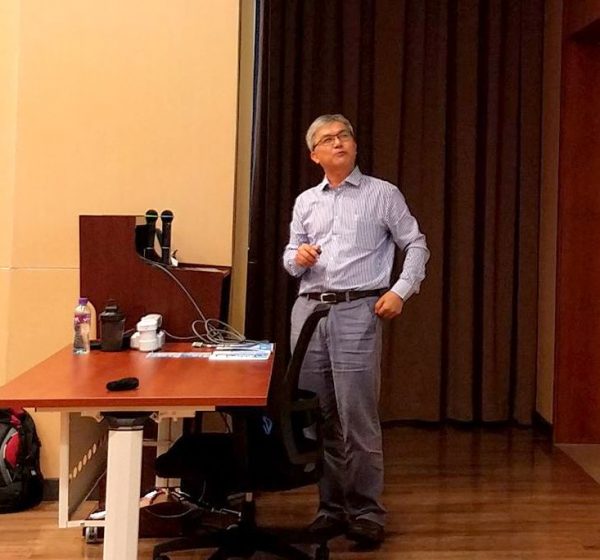| Talk title | Foodborne Listeria monocytogenes: mechanisms of acid tolerance and regulation |
| Speaker | Prof. Weihuan FANG, Professor, Institute of Preventive Veterinary Medicine, Zhejiang University |
| Date & Time | 25 October 2017 (Wednesday) 10:00-11:00 |
| Venue | Room G004, E12 Building (University of Macau) |
| Abstract | Listeria monocytogenes is resistant to acidic conditions where it encounters in the environments and in vivo. It contains complete sets of genes coding for arginine deaminase (ADI), argmatine deaminase (AgDI) and glutamate decarboxylase (GAD) systems. SigmaB factor is known to be a principal regulator of stress responses including acidic stress. We attempted to decipher the functional aspects of the gene cluster lmo0036-lmo0041 of L. monocytogenes that contains arginine deiminase (ADI) and agmatine deiminase (AgDI) systems as well as the regulatory mechanisms upon acidic stress. Gene knock-out and complementation were approached to decipher the functions of the enzymes or the stress response regulators. (1) Transcription of arcA (lmo0043 encoding arginine deiminase) as well as aguA1 and aguA2 (lmo0038 and lmo0040 coding for putative agmatine deiminases) was significantly increased in L. monocytogenes cultures subjected to acidic stress at pH 4.8. Deletion of arcA and aguA1, but not aguA2, impaired growth of L. monocytogenes under acidic condition at pH 5.5, and reduced its survival in synthetic human gastric fluid at pH 2.5 and in murine stomach. Bacterial load in the spleen of mice inoculated with arcA deletion mutant was significantly lower than the wild-type strain. AguA1 has optimal activity 25℃ and over a wide range of pH from 3.5 to 10.5. However, AguA2 showed no deiminase activity. Site-directed mutagenesis generated a number of catalytic mutants for AguA1 and AguA2. All mutants of AguA1 completely lost their enzymatic activity. Interestingly, AguA2 acquired agmatine deiminase activity only when Cys157 was mutated to Gly. The reverse was seen in AguA1 with G157C mutation that lost the enzyme activity. Thus, we have discovered G157 as a novel residue other than the known catalytic triad (Cys-His-Glu/Asp) that is also critical for the enzyme activity in L. monocytogenes. Furthermore, we found that argR, the arginine repressor, acts on arginine metabolic pathways and on sigB in response to acidic stress. (2) Within the GAD system, GadT2/GadD2 were found to be the major players of acid tolerance that determine the difference of acid tolerance among strains. The GAD system components did not respond to acidic stimuli. Genes gadT1 and gadT2/gadD2 were not regulated by sigB, a global stress response. All components of the GAD system were not regulated by five putative GAD transcription regulators GadRs. (3) Further analyses indicated that rsbX within the sigB operon was a negative regulator of sigB expression and function during the post-stress period. It was also a negative regulator of sigB during stress when acting in combination with rsbS. We conclude that L. monocytogenes contains functional ADI and AgDI systems that mediate acid tolerance. Of the two putative agmatine deiminases, only AguA1 is functional. There is a complex regulatory network during acid stress within the sigB operon and between sigB and argR. |


